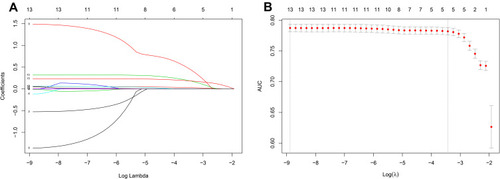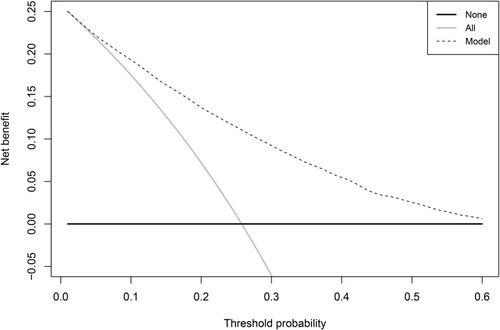Figures & data
Table 1 Characteristics of Participants
Figure 2 Predictors selection using the least absolute shrinkage and selection operator (LASSO) binary logistic regression model. (A) LASSO coefficient profiles of the 14 texture features. A coefficient profile plot was produced against the log (λ) sequence. (B) Hyperparameter (λ) selection in the LASSO model used 10-fold cross-validation via minimum criteria. Dotted vertical lines were drawn at the optimal values by using the minimum criteria and the 1 standard error of the minimum criteria (the 1-SE criteria).

Figure 3 Calibration plot.

Figure 4 Decision-curve analysis.



